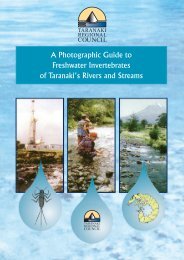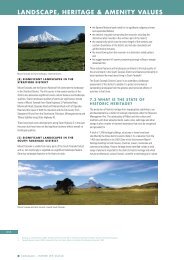Yellow Bristle Grass - The Ute Guide
Yellow Bristle Grass - The Ute Guide
Yellow Bristle Grass - The Ute Guide
- TAGS
- yellow
- bristle
- grass
- guide
- trc.govt.nz
Create successful ePaper yourself
Turn your PDF publications into a flip-book with our unique Google optimized e-Paper software.
<strong>Yellow</strong> bristle grass occurs in areas with adequate summer rainfall, usually<br />
where the annual rainfall exceeds 500 mm per annum, although it can tolerate<br />
dry conditions once established. It grows in areas where the soil has been<br />
disturbed, including cultivated areas, old pastures and along footpaths and<br />
the side of roads, especially where water collects. <strong>Yellow</strong> bristle grass has a C 4<br />
photosynthetic pathway so it grows best at higher temperatures and is frost tender.<br />
It is not toxic to stock but they might avoid grazing the seed head.<br />
<strong>Yellow</strong> bristle grass fi lls a similar environmental niche to other C 4 summer annual<br />
grasses such as crowfoot grass, summer grass and smooth witchgrass. However, due<br />
to the bristly nature of the seed it is more readily spread than the other species. It<br />
is moderate to slow-growing, especially if the weather remains cool, and generally<br />
should not establish and compete in vigorous ryegrass/white clover swards. <strong>Yellow</strong><br />
bristle grass establishes in run-out or damaged pastures that have been opened<br />
up due to pugging, over-grazing or the death of winter annuals such as fl at<br />
weeds or annual poa.<br />
<strong>Yellow</strong> <strong>Bristle</strong> <strong>Grass</strong> <strong>Ute</strong> <strong>Guide</strong><br />
7














